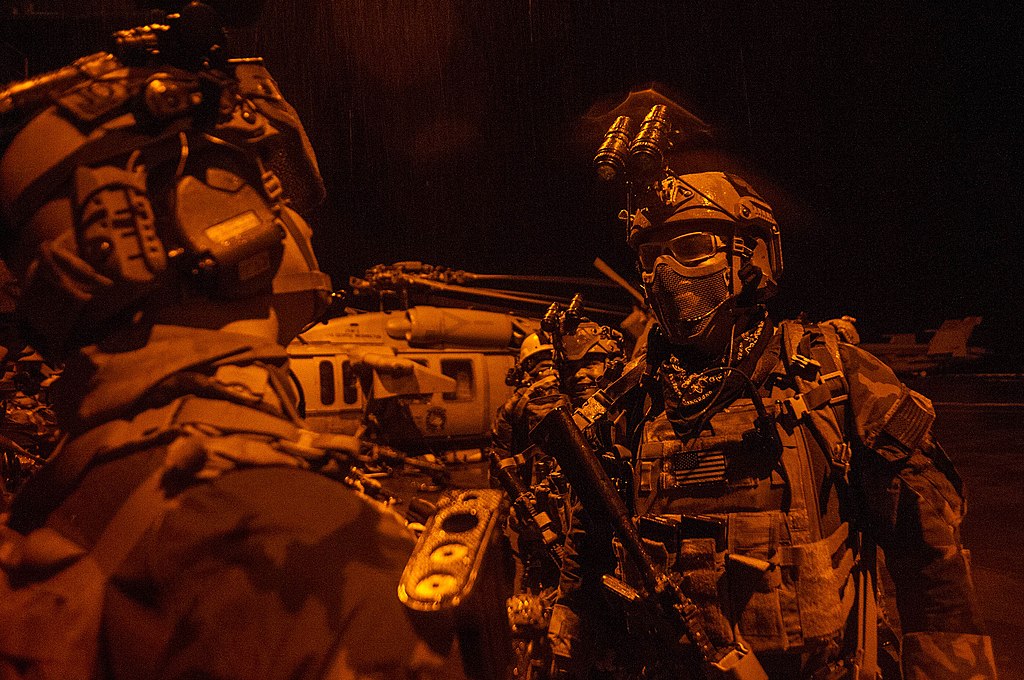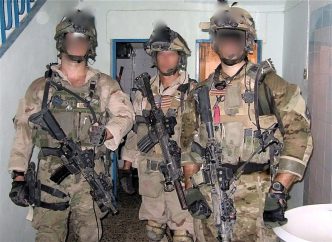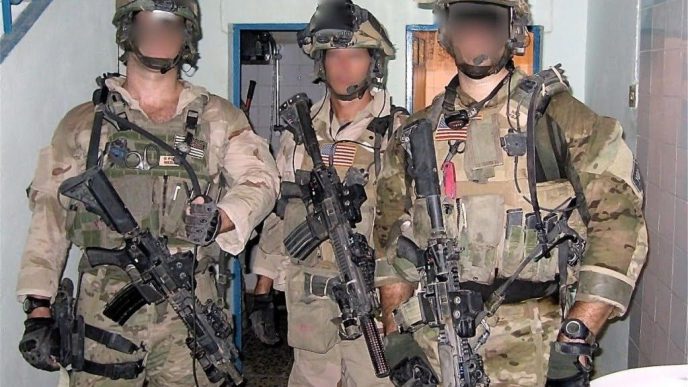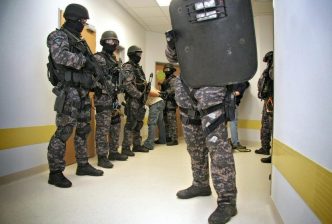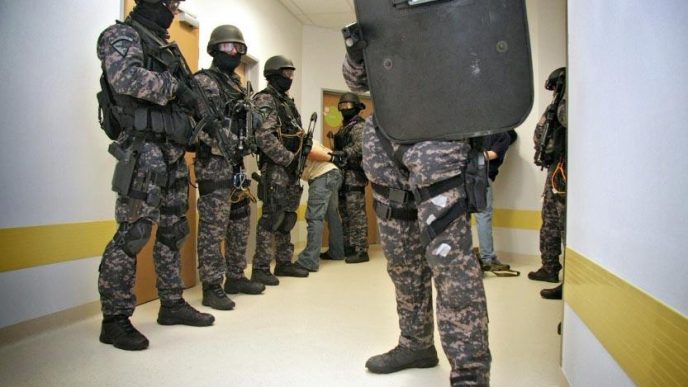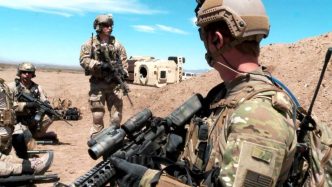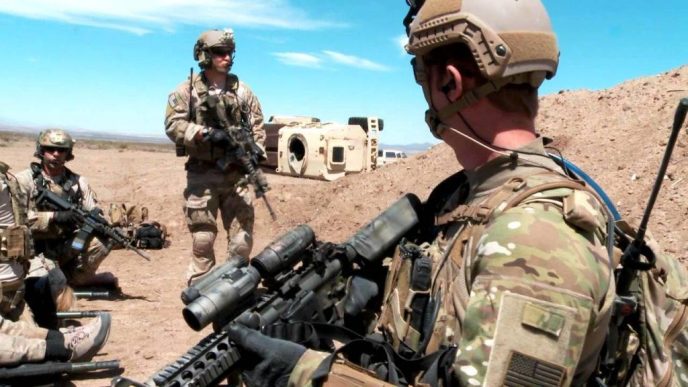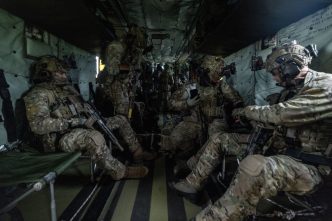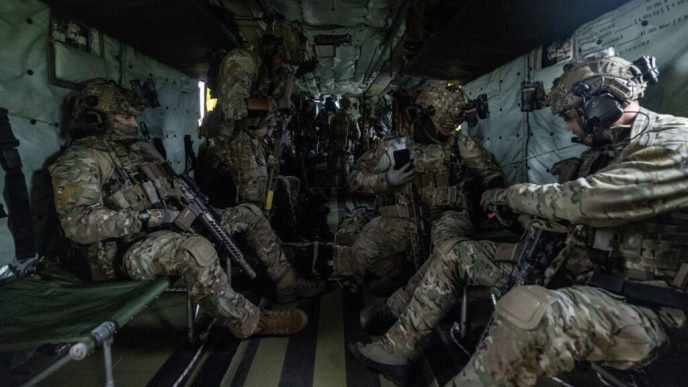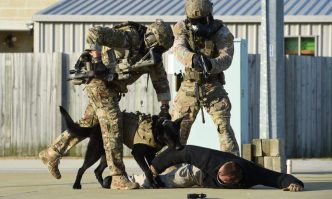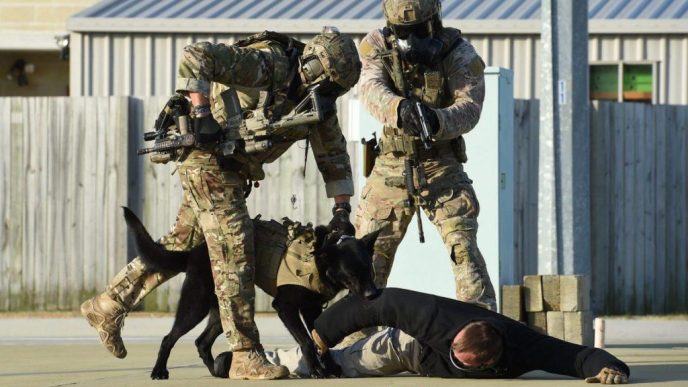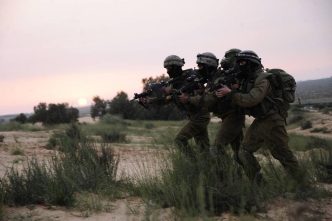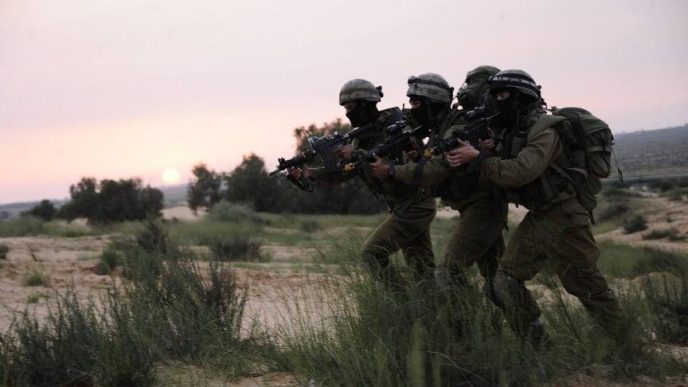The United States Navy SEALs are the US Navy’s primary special operations force and an internal component of the Naval Special Warfare Command that is trained and equipped to conduct special operations in maritime, air, and land environments. They can operate covertly and independently in maritime, jungle, urban, arctic, mountainous, and desert environments.
Introduction
The acronym SEAL stands for Sea, Air, and Land. SEAL Teams are usually sent to kill or capture highly valuable targets (HVTs) or to gather intelligence behind enemy lines. They are amongst the most skilled and effective special operators in the world. The Navy SEALs preferred obscurity through all those years. Still, in recent years they have become a focus of national interest increasingly due to the media attention they have received through books and movies.
History
Scout and Raiders
The Navy formed US Navy SEALs in 1962, but the modern-day US Navy SEALs have existed since World War II. At the dawn of World War II, the United States military established Navy Amphibious Scout and Raider School at Fort Pierce, Florida. In 1942, it was a joint project of the Army, Marine Corps, and Navy to prepare special units for the covert reconnaissance of landing beaches and coastal defenses. In September 1942, the first Scouts and Raiders (S&R) operators graduated from the Observer Group, a joint U.S. Army-Marine-Navy unit.
Few groups of Scouts and Raiders saw combat all over the world during World War II. They took part in various Allied operations, including Operation Torch on the North African Coast and landing operations in Sicily Salerno, Anzio, Normandy, and Southern France.
During World War II, US Navy formed Naval Combat Demolition Units (NCDUs) that were specialized and equipped to perform amphibious assaults on enemy-held shores, focusing on clearing obstacles such as minefields and booby traps that would otherwise hinder the landing of American forces.
From 1943, NCDUs took part in several major amphibious assaults during the war, including the Normandy invasion in June 1944 and the invasion of Okinawa in April 1945. The units were made up of volunteers selected for their physical strength and courage. They had a crucial role during the operations in Normandy, especially in the first hours, where they showed their bravery and skill in clearing obstacles allowing American forces to land on enemy-held shores and establish a foothold, paving the way for the eventual victory of the Allied powers.
OSS Maritime Unit
Another unit formed during World War II, which was a predecessor of the modern Navy SEALs, was the OSS Maritime Unit. It operated under the Office of Strategic Services (OSS), a paramilitary organization and a progenitor of the CIA. Former agents of the OSS formed US Army Special Forces (Green Berets) in 1952; the first candidates for initial training were drafted from the Operational Swimmers of OSS.
The OSS Operational Swimmers were deployed to conduct special operations behind enemy lines to engage in organized guerrilla warfare and gather information on enemy resources and troop movements. The OSS Operational Swimmers were the fundament of the OSS Maritime Unit formed in 1943. They completed their training in 1944 when they were deployed to combat in several theaters during World War II.
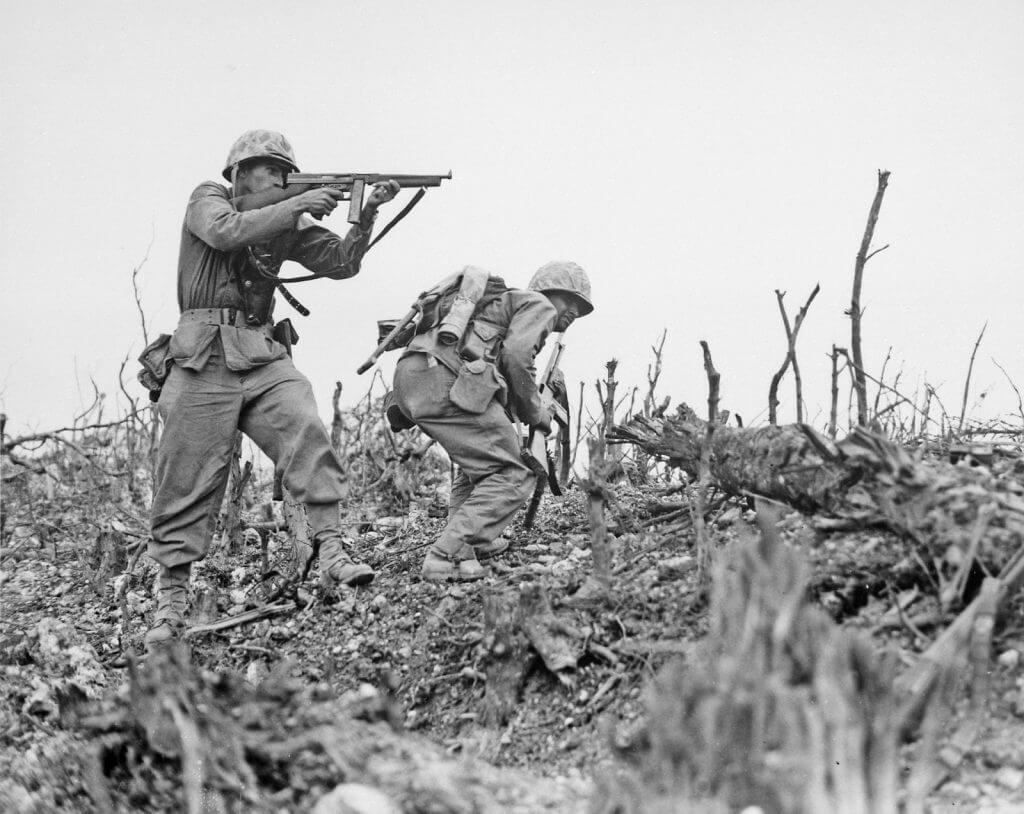
The unit consisted of a small team of expert sailors, divers, and underwater demolition specialists. The unit was trained to conduct various covert maritime operations, including sabotage, reconnaissance, and support for resistance movements.
After the war, the OSS Maritime Unit was disbanded, and its members were absorbed into other US military units. Today, the unit’s legacy lives on in the United States Navy’s SEAL Teams, which continue to perform the important task of conducting covert maritime operations.
Underwater Demolition Teams (UDTs)
Around the same time, the OSS Maritime Unit was formed, and another important organization was drafted for amphibious warfare operations focused on underwater demolition and reconnaissance.
Underwater Demolition Teams (UDTs) were made up of volunteers who were selected for their physical strength and courage. They were trained to clear obstacles and mines using a variety of techniques, including the use of explosives and specialized tools. Similar to the NCDUs, they had a significant role before and during amphibious operations in World War II and later Korean War.
After the Korean War, the UDTs were disbanded, and their members were transferred to other units of the US Navy.
Modern Navy SEALs
Modern Navy SEALs were formed in January 1962, shortly after the failure of the Bay of Pigs invasion in April 1961. The formation order came directly from President John F. Kennedy, who recognized the need for a specialized US military unit trained and equipped to conduct covert operations in maritime, air, and land environments.
US Navy initially formed the SEALs by combining two existing units: the Underwater Demolition Teams (UDTs) and the Naval Combat Demolition Units (NCDUs). The UDTs were trained in underwater demolition and reconnaissance, while the NCDUs were trained in beach reconnaissance and demolition. The SEALs incorporated the best aspects of both units to create a new, highly trained, capable special operations force.
Mission
The mission of the United States Navy SEAL Teams is to conduct special operations in maritime, air, and land environments. SEAL Teams are trained and equipped to conduct a wide range of operations, including direct action, special reconnaissance, counter-terrorism, and foreign internal defense. These operations can include the capture or assassination of high-value targets, the rescue of hostages, and the disruption of enemy operations.
The mission of the SEAL Teams is to conduct special operations that are essential to the United States national security. These operations are often secretive and dangerous, but they are necessary to protect American interests and to keep our nation safe.
As in past conflicts, they prefer obscurity; however, unlike past conflicts, they have become a focus of national interest increasingly, particularly since the rescue of Captain Richard Phillips of the Maersk ship Alabama and the raid at Abbottabad, Pakistan, where they killed Osama bin Laden the world’s foremost terrorist.
Organization
The United States Navy SEAL Teams are organized into eight active duty teams and two reserve teams. The active duty teams are organized into two commands: Naval Special Warfare Group 1 and Naval Special Warfare Group 2.
Each SEAL Team consists of six platoons and a headquarters element. The platoons are the basic operational units of the SEAL Teams and are typically composed of 16 SEALs each. The headquarters element provides support and coordination for the platoons and includes staff officers, communication specialists, and support personnel.
Within the platoons, SEALs are organized into smaller units called SEAL Delivery Vehicle Teams (SDVTs) and Tactical Development and Evaluation Squadrons (TDES). SDVTs are specialized units trained to operate specialized underwater vehicles, while TDES units are responsible for testing and evaluating new equipment and tactics.
The SEAL Teams are organized into a hierarchical structure that allows for flexibility and coordination in conducting special operations. The teams are divided into platoons and smaller units, with a headquarters element providing support and guidance. This structure allows SEALs to operate effectively in various environments and missions.
Selection and training
The selection and training process is rigorous and demanding. Only a small percentage of candidates who apply to become SEALs can successfully complete the program and earn the right to wear the coveted SEAL trident.
The selection process for SEALs begins with a series of physical and mental aptitude tests. Candidates must pass a series of physical fitness tests, including a timed swim, push-ups, sit-ups, and a 1.5-mile run. They must also pass mental aptitude tests to assess their problem-solving and decision-making skills.
Candidates who pass the initial aptitude tests are invited to attend Basic Underwater Demolition/SEAL (BUD/S) training at the Naval Special Warfare Center in Coronado, California. BUD/S is a grueling six-month program that includes physical conditioning, combat diving, and land warfare training.
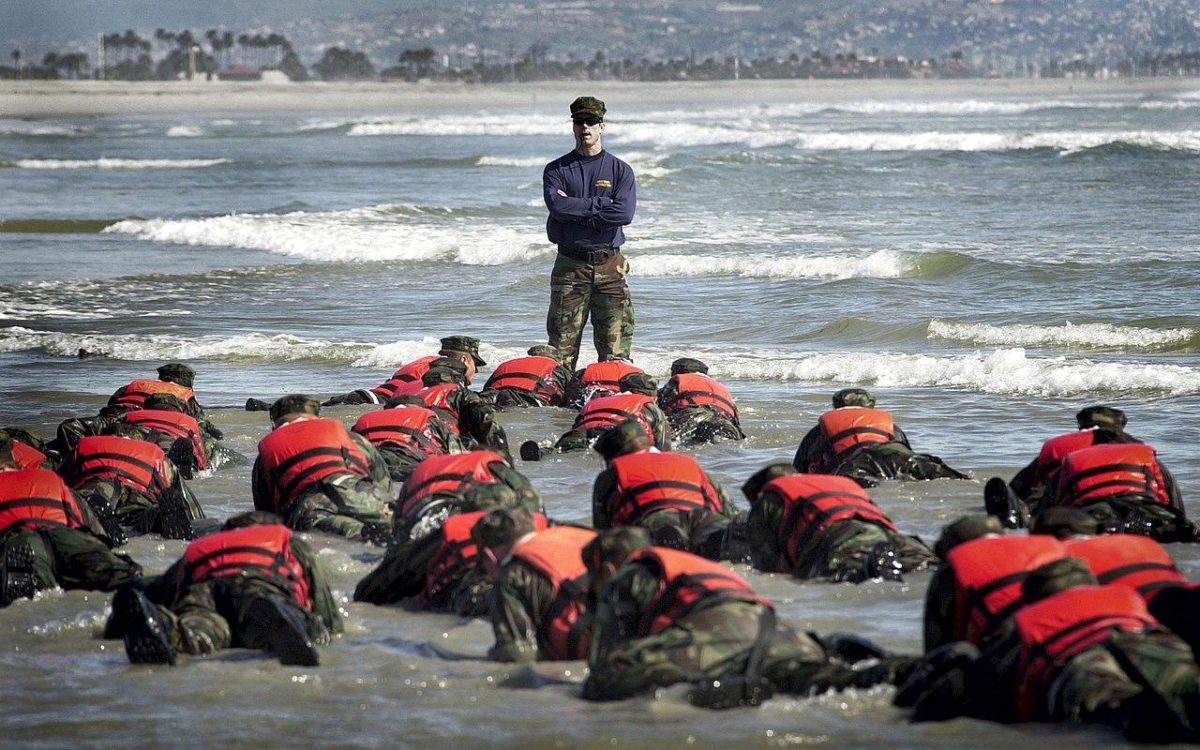
BUD/S training tests the limits of a candidate’s physical and mental endurance. The program includes long runs, ocean swims, grueling physical challenges, and classroom instruction on weapons, tactics, and leadership.
Candidates who complete BUD/S training are eligible to attend SEAL Qualification Training (SQT), a six-month program focusing on advanced combat skills and tactics. Upon completion of SQT, candidates are awarded the SEAL trident and are qualified to serve on a SEAL Team.
The selection and training process for the SEAL Teams is designed to identify and develop the best candidates into elite warriors capable of conducting special operations in a wide range of environments. The process is demanding and challenging, but it produces some of the world’s most highly trained and capable special operators.
East Coast and West Coast SEALs
There is no difference between East Coast and West Coast Navy SEALs regarding their training, capabilities, or missions. The United States Navy SEAL Teams are organized into eight active duty teams, and two reserve teams spread across the country. Some teams are located on the East Coast and some are located on the West Coast, but there is no difference in their capabilities or missions based on their location.
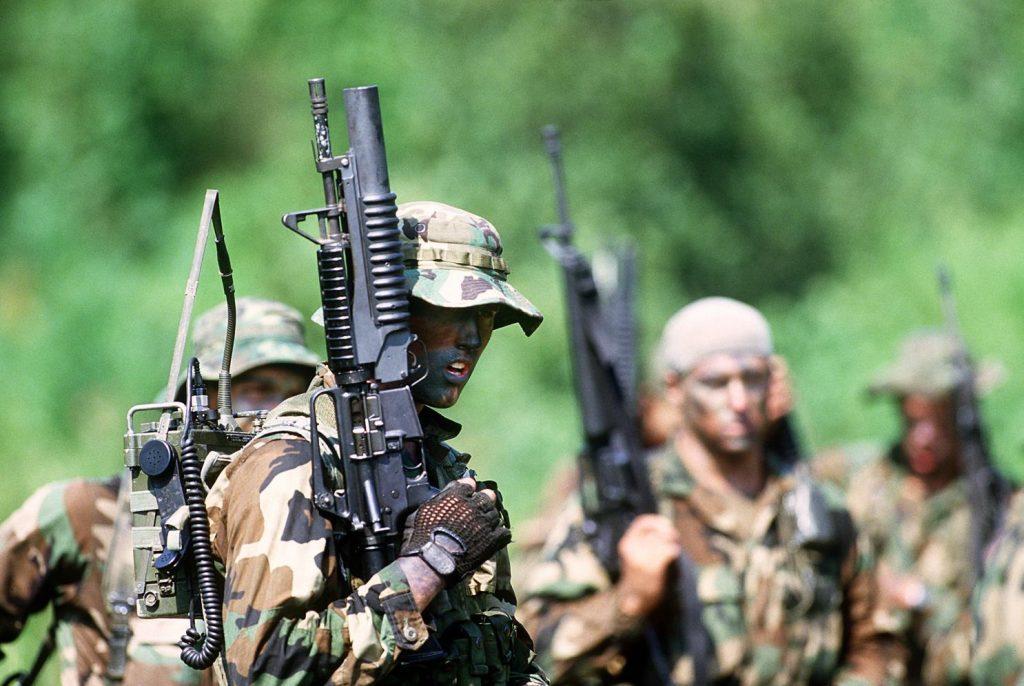
The only difference between the SEAL Teams on the East Coast and the SEAL Teams on the West Coast is their geographic location. The teams on the East Coast are typically closer to potential operational areas in the Middle East and Africa, while the teams on the West Coast are typically closer to potential operational areas in the Pacific and Asia. However, all SEAL Teams can deploy worldwide to conduct special operations, regardless of location.
Ranks
The United States Navy SEAL Teams are organized into a hierarchical rank structure similar to other US military units. SEALs have their unique rank structure, with titles and insignia distinct from those of other naval units.
The rank structure for SEALs consists of enlisted ranks and officer ranks. Enlisted SEALs have not attended college and have enlisted directly into the SEAL Teams. The enlisted ranks in the SEAL Teams are as follows, in ascending order:
- SEAL Apprentice
- SEAL
- Petty Officer 3rd Class
- Petty Officer 2nd Class
- Petty Officer 1st Class
- Chief Petty Officer
- Senior Chief Petty Officer
Officer SEALs are those who have attended college and have been commissioned as officers in the SEAL Teams. The officer ranks in the SEAL Teams are as follows, in ascending order:
- Ensign
- Lieutenant Junior Grade
- Lieutenant
- Lieutenant Commander
- Commander
- Captain
Operations
The United States Navy SEALs have participated in many conflicts and military operations since their formation in 1962. Some of the conflicts and operations in which SEALs have taken part include:
- The Vietnam War (1964-1973): SEALs played a crucial role in the Vietnam War, conducting a wide range of operations, including direct action, special reconnaissance, and counter-insurgency. SEALs were instrumental in the success of many operations during the war, including the capture of North Vietnamese leader Nguyen Hue in 1972.
- Operation Eagle Claw (1980): SEALs were part of the task force that attempted to rescue American hostages in Iran in 1980. The operation failed, and eight SEALs were killed when their helicopter crashed in the desert.
- The Gulf War (1990-1991): SEALs were involved in several operations during the Gulf War, including capturing Iraqi oil platforms and inserting special reconnaissance teams into enemy territory.
- Operation Enduring Freedom (2001-2021): SEALs have played a key role in the war in Afghanistan, conducting a wide range of operations, including direct action, special reconnaissance, and counter-terrorism.
US Navy SEALs are not often publicly acknowledged for their missions. However, a few notable SEAL operations have been publicly disclosed and have received significant media attention.
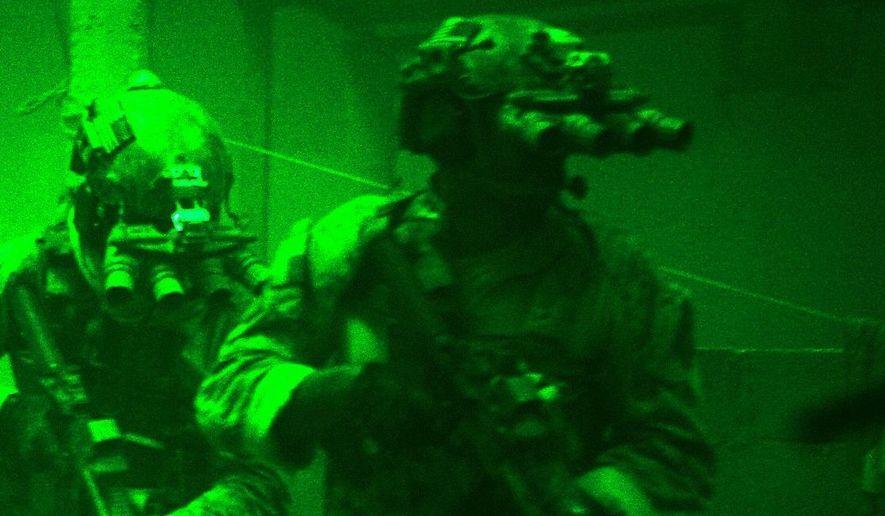
One of the most notable SEAL missions was the raid on the compound of Osama bin Laden in Abbottabad, Pakistan, in May 2011. SEAL Team 6, the SEALs’ elite direct action unit, carried out the raid, which resulted in the death of bin Laden and the capture of important intelligence materials.
Another notable SEAL mission was the rescue of Captain Richard Phillips from Somali pirates in April 2009. SEAL snipers could accurately shoot and kill three of the pirates from the deck of the Maersk Alabama, freeing Captain Phillips and ending the standoff.
Other notable SEAL missions include the rescue of American hostages in Iran in 1980, the capture of Iraqi dictator Saddam Hussein in 2003, and the rescue of American aid worker Jessica Buchanan in 2012.
Weapons and equipment
Navy SEALs are highly trained and well-equipped operators who use various weapons and equipment to carry out their missions. Some of the weapons and equipment commonly used by SEALs include:
- Assault rifles: SEALs often use assault rifles such as the M4 carbine and the HK416 for close-quarters combat and medium-range engagements.
- Sniper rifles: SEALs may use precision rifles such as the M110 semi-automatic sniper system and the Remington 700 for long-range shooting.
- Submachine guns: SEALs may use submachine guns like the Heckler and Koch MP7 and the MK11 for close-quarters combat in confined spaces.
- Handguns: SEALs may carry a handgun as a sidearm, such as the Sig Sauer P226 or the Glock 19.
- Explosives: SEALs often use explosive devices, including grenades and breaching charges, to clear obstacles or create entry points.
- Tactical gear: SEALs may use a range of tactical gear, including night vision goggles, body armor, and specialized communication equipment.
These are just some examples of the weapons and equipment used by SEALs. The weapons and equipment used by SEALs can vary depending on the mission and the environment.
Leap Frogs
The Leap Frogs are the United States Navy’s parachute demonstration team. The team comprises active duty SEALs and Special Warfare Combatant-Craft Crewmen (SWCC) who perform precision aerial demonstrations at airshows and other events.
The Leap Frogs were formed in 1969 and have been performing aerial demonstrations for over 50 years. The team is known for its high-energy, action-packed performances, which often include precision jumps from high altitudes, daring aerial maneuvers, and intricate formations.
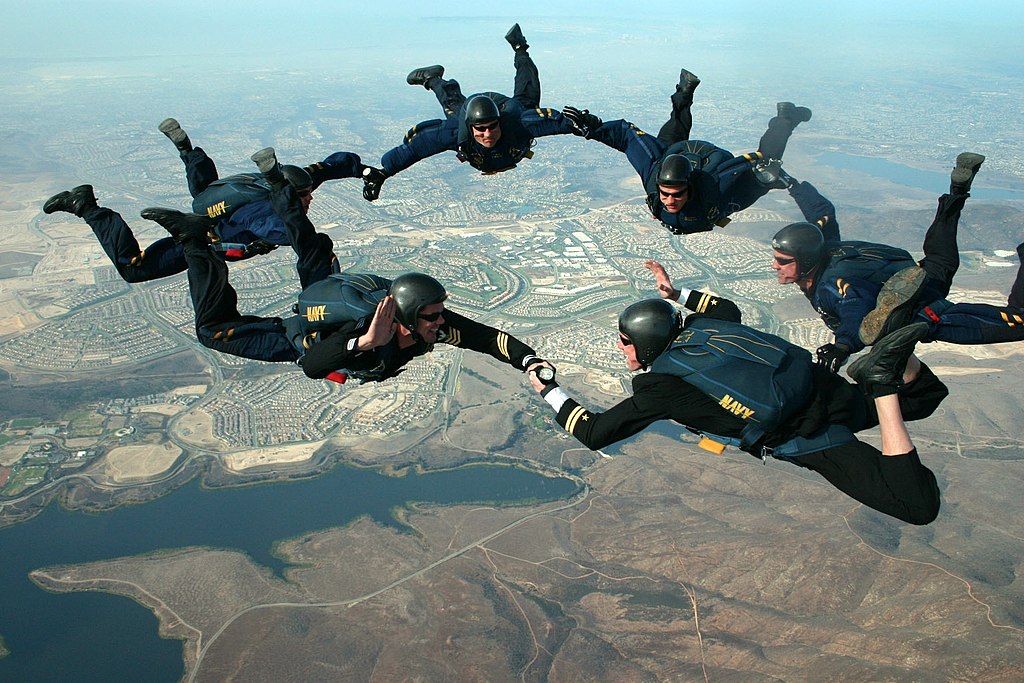
The Leap Frogs perform at airshows and other events across the country, showcasing the skills and capabilities of the SEALs and SWCC. Their performances are designed to entertain and inspire audiences while highlighting the naval special operations community.
UDT Museum
The UDT-SEAL Museum is a museum in Fort Pierce, Florida, dedicated to the history of the United States Navy SEALs and their predecessors, the Underwater Demolition Teams (UDTs). The museum was founded in 1985 and is the only museum in the world dedicated to the history of SEALs and UDTs.
The UDT-SEAL Museum has a collection of artifacts, documents, and other items related to the history of the SEALs and UDTs. The museum’s collection includes uniforms, weapons, equipment, and other items used by SEALs and UDTs in training and combat.
In addition to its collection, the UDT-SEAL Museum has many exhibits that tell the story of the SEALs and UDTs. These exhibits include displays on the formation and evolution of the SEALs, the role of the UDTs in World War II and the Korean War, and the training and missions of the SEALs.
The UDT-SEAL Museum is a unique institution dedicated to preserving and sharing the history of the United States Navy SEALs and their predecessors, the UDTs. The museum’s collection and exhibits provide a fascinating look at the evolution of naval special operations and the role of the SEALs and UDTs in American military history.
